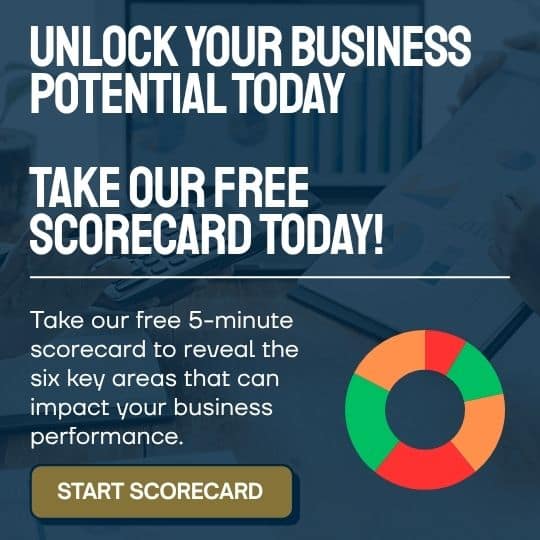Business that runs without you is more than a catchy phrase. It’s the key to creating lasting freedom, value, and satisfaction from your business. For many business owners, it begins as a dream the ability to step away without chaos, to take a real holiday, or to know your business can grow without your daily involvement. Yet for most, that dream feels far off.
If you’re finding that everything relies on you quotes, client issues, staff decisions you’re not alone. Many business owners become the glue that holds everything together. But that glue becomes a trap, keeping you stuck in the business instead of leading it.
Let’s explore how to transition from essential to optional. You’ll learn how to build a business that runs without you, so you can finally enjoy the freedom you set out to achieve.
Why Build a Business That Runs Without You?
When you’re central to every decision and delivery, several problems emerge:
- You’re constantly working overtime
- Decisions get delayed waiting on you
- Your team becomes reactive instead of proactive
- You feel burned out and lose the passion you once had
- The business becomes nearly impossible to sell or scale
A business that runs without you looks very different:
- Team members handle operations with confidence
- Systems manage routine tasks and workflows
- Your time is spent on vision, growth, and leadership
- You can step away without disruption
- The business becomes an asset, not just a job
This isn’t about stepping back completely. It’s about building a structure that no longer depends on your every move.
Shift From Operator to Business Owner
To build a business that runs without you, the first shift must be internal. Most business owners started out doing everything sales, admin, delivery, customer service. Over time, this creates a deep attachment to being “the person” who gets things done.
But here’s the truth: the more your business needs you, the less valuable it is.
If you want to scale, sell, or simply enjoy time with your family, you need to build something that works without your constant presence. That’s not neglect. That’s leadership.
You don’t grow by doing more. You grow by designing a business machine that works independently. That is the essence of a business that runs without you.
The Three Pillars of a Self-Sufficient Business
A business that runs without you stands on three essential pillars: systems, people, and structure.
1. Systems That Do the Heavy Lifting
Systems reduce dependency. They turn chaos into order and create consistency across every part of your business.
Start systemising key areas such as:
- Client onboarding
- Pricing and quoting
- Invoicing and payments
- Scheduling and operations
- Customer service
- Job tracking and reporting
You don’t need sophisticated software to begin. Use checklists, templates, and screen recordings to document your processes. Store them in a shared folder and keep them updated. Train your team to follow these systems until it becomes second nature.
Once embedded, these systems ensure that tasks are handled to standard regardless of who’s doing them.
2. People Who Own Their Role
A business that runs without you relies on people who don’t just do tasks they own outcomes.
Build ownership by:
- Creating clear job descriptions with measurable KPIs
- Running regular one-on-one meetings for guidance and accountability
- Developing a second-in-command to absorb leadership tasks
- Fostering a team culture of responsibility and feedback
When your team members think critically, solve problems, and lead themselves, your business becomes far more resilient.
As a business coach, I’ve seen this transformation first-hand. One client who ran a trades business in Eastern Sydney had all operations funnel through him. After coaching, we helped him delegate quoting, assign job coordination, and implement weekly team meetings. Within six months, he was able to take a family holiday without worry and revenue grew in his absence.
3. Structure That Creates Autonomy
Structure gives your business rhythm and reduces reliance on your presence.
Here’s how to build it:
- Weekly team check-ins with clear agendas
- Job management platforms to visualise progress
- Escalation pathways for issues (so not everything lands on your desk)
- Financial dashboards to track key metrics
The more predictable your business rhythm, the easier it is for your team to operate without constant oversight. This structure builds clarity, trust, and confidence across the board.
And that’s when the real magic happens a business that runs without you becomes not just possible, but preferable.
The Unexpected Value of Independence
You might not be thinking about selling your business, but you should still treat it like an asset. A business that runs without you holds greater market value.
Why?
- Buyers want stability and systems not your personal involvement
- Scalable businesses fetch higher multiples
- You can take time off, or even exit entirely, without stress
- Your team remains intact and performance stays consistent
Even if sale isn’t the goal, a business that runs without you gives you more control, more peace of mind, and more options.
Common Fears That Keep Owners Trapped
Let’s be real. Letting go is uncomfortable.
You might think:
- “What if they mess it up?”
- “No one will care as much as I do”
- “Everything will fall apart if I’m not around”
These thoughts are natural. But avoiding delegation guarantees you’ll always be stuck.
Mistakes will happen. But with the right support, they’re learning moments. The real risk is continuing to carry everything yourself, leading to burnout and resentment.
Remember: leadership is not about doing it all. It’s about empowering others to succeed without you in the middle of every task.
Getting Started: Your First Steps
Want to create a business that runs without you but unsure where to begin? Start small and focus on consistency.
Here’s your initial roadmap:
- Write down everything only you can do (e.g., vision, strategy)
- List tasks you still do but could delegate with training
- Pick one repeatable task document and delegate it this month
- Set a weekly rhythm with your team: meetings, updates, priorities
- Block a monthly half-day for strategy work only no operations
This builds the foundation for a business that runs without you. You’ll start to see progress, confidence will grow, and your team will begin stepping up.
Build Freedom Through Smart Business Design
A business that runs without you isn’t just about time off. It’s about creating freedom, growth, and value. Whether your goal is to scale, sell, or step back, the solution is the same: systems, structure, and leadership.
At Business Coach Mark, I work with business owners who are ready to make that leap. With the right guidance and tools, you can break the cycle, reclaim your time, and enjoy running your business again.
→ Ready to build a business that runs without you?
Book an Initial Chat with Mark






